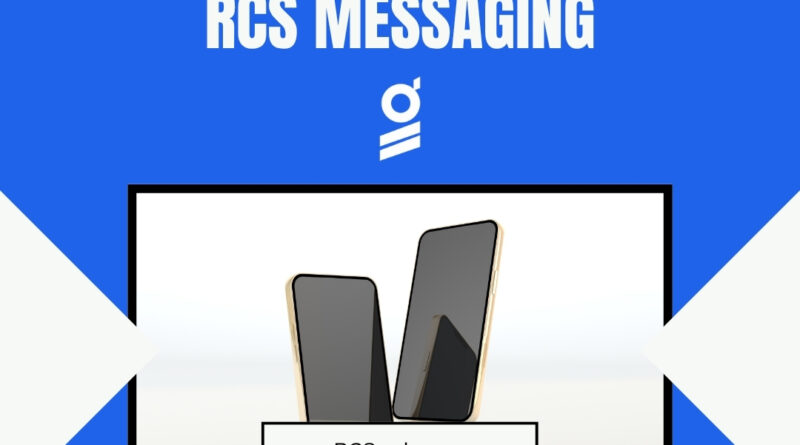Rich Communication Services (RCS)
In an era dominated by mobile communication, businesses are constantly searching for more engaging, interactive, and secure ways to connect with their customers. While SMS has long served this purpose, Rich Communication Services (RCS) is quickly emerging as the next big leap in mobile messaging. With features like high-resolution media sharing, read receipts, branded messaging, and suggested replies, RCS transforms the basic texting experience into something more app-like, immersive, and user-friendly.
This article dives into what RCS is, how it benefits both businesses and consumers, and why it’s becoming a must-have tool in modern communication strategies.
What Are Rich Communication Services (RCS)?
Rich Communication Services is an advanced messaging protocol developed as a successor to SMS and MMS. Unlike traditional SMS, which sends plain text messages, RCS enables multimedia content, verified sender IDs, typing indicators, and more—all within the default messaging app on Android phones. In simple terms, RCS turns your phone’s basic texting app into something much closer to WhatsApp or iMessage, without requiring a separate app download.
RCS is supported by major telecom providers and Android device manufacturers worldwide, and it continues to gain momentum with broader carrier support and integration into messaging platforms like Google Messages.
Key Features of RCS
RCS offers several enhanced features compared to SMS, including:
- High-resolution image and video sharing
- Typing indicators and read receipts
- Branded business messages with logos and verified sender names
- Interactive buttons for replies, purchases, or customer support
- Location sharing and carousels for showcasing multiple products
These features open the door for businesses to offer a more engaging and helpful communication experience directly in the messaging inbox.
Why RCS Matters for Businesses
1. Increased Engagement
RCS messages grab attention with visuals and interactive elements. Whether it’s a product showcase, flash sale, or delivery update, users are more likely to engage with rich content than with plain text.
2. Enhanced Brand Trust
With sender verification, customers can see that a message truly came from your business—not a scammer or spoofed number. This builds trust and reduces fraud risk, especially for sensitive industries like banking or healthcare.
3. Improved Customer Experience
RCS supports quick replies, suggested actions, and real-time support. A customer can track an order, schedule a service, or confirm a booking—all through a single interactive message.
4. No App Needed
Unlike third-party apps, RCS is built into the native Android messaging app, making it more accessible to users without any need for downloads or updates.
Use Cases of RCS in Business Messaging
RCS opens up creative possibilities for many industries. Some common applications include:
- Retail: Send dynamic product catalogs with images, prices, and purchase buttons.
- Travel: Deliver boarding passes, travel updates, and hotel check-in options.
- Finance: Provide secure alerts, statements, and fraud notifications.
- Customer Support: Enable real-time help with smart replies and chatbot integration.
- Marketing Campaigns: Promote offers with engaging visuals and clickable CTAs.
For example, a clothing brand can use RCS to send a carousel of new arrivals with direct links to “Add to Cart” or “View More”—all from within the message.
The Roadblocks to Widespread Adoption
While RCS holds significant potential, there are still a few challenges to consider:
- Platform Limitation: Currently, RCS is mostly available on Android devices. Apple’s iPhones do not yet support RCS, although there are signs of possible future integration.
- Carrier Support: RCS requires carrier support for full functionality. While many major networks have adopted it, some regions are still catching up.
- Message Costs: RCS messaging is generally priced higher than SMS, though it offers more features. Businesses need to weigh cost against expected engagement and ROI.
Despite these barriers, adoption is accelerating, and future updates—including broader iOS support—are expected to expand its reach even further.
How to Get Started with RCS
Businesses looking to use RCS typically go through Messaging-as-a-Platform (MaaP) providers or RCS business messaging partners. These platforms help brands:
- Create and customize rich message templates
- Manage customer interactions
- Ensure compliance with privacy and messaging regulations
- Analyze performance through dashboards and analytics
.
Conclusion: RCS is the Future of Texting
Rich Communication Services represents the next generation of mobile messaging—blending the simplicity of SMS with the power of apps. For businesses, it’s an opportunity to elevate customer interactions through rich, branded, and actionable messaging without requiring new apps or platforms.
While it’s still rolling out across networks and devices, early adopters are already seeing improved engagement and satisfaction. As more carriers and devices support it, RCS is set to become the new standard in business messaging—especially for brands that value personalization, interactivity, and customer trust.




